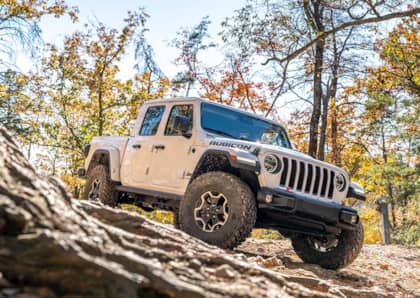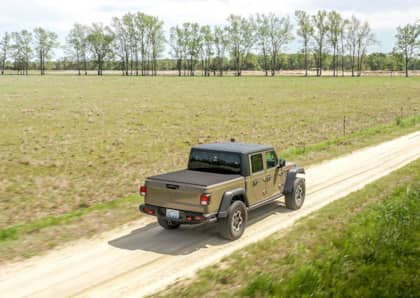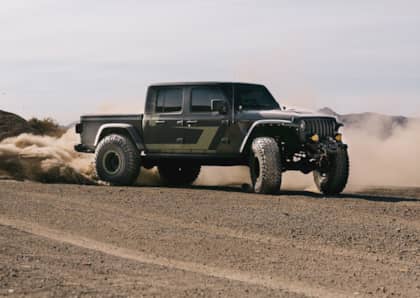35s No Lift (Part II) with AEV Jeep Gladiator Wheels | Inside Line
Thanks to massive wheelwell openings and highline fender flares, the 2020 Jeep Gladiator Rubicon can easily run a 35-inch-tall tire without a lift. We thoroughly tested this with a 35x11.50R17 Nitto Trail Grappler (which you can watch here). While a true-to-size 35-inch-tall tire is no problem for the Rubicon Gladiator, for those looking to keep the stock wheels, your tire options will be more limited if you are trying to stay within tire manufacturer recommendations. It’s something we’ve been battling ever since upgrading our Gladiator Rubicon with a set of 35x12.50R17 Nitto Ridge Grapplers.
This is due to the fact that the stock 17-inch wheel is only 7.5 inches wide, making it a touch too narrow for the more common 35x12.50R17 tire. While it can be done, you’ll need to reduce the air pressure in the tire to get an even contact patch. Doing so will equate to reduced performance and fuel economy. Our ultimate fix was to upgrade to a wider wheel.
While there are plenty of aftermarket wheel options, we wanted a set that would retain as close to stock backspacing as possible. This would be to not only keep the tires tucked under the fender flares, but to reduce the wear on our front-end components. For those looking for the live action breakdown of our wheel search, you can watch our latest episode of Inside Line on our YouTube channel. Here, we’re diving into what made us ultimately decide on the Pintler wheel from American Expedition Vehicles.
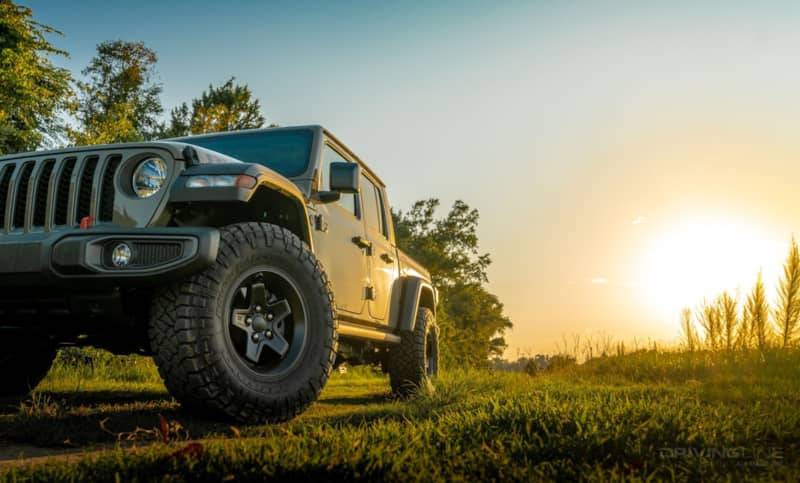
Offset Basics
One thing that has changed over the past decade is the fact that we are seeing more and more wheels with offset listed in lieu of backspacing. Offset is represented by either a positive or negative figure listed in millimeters. An easy way to understand offset is to think of zero offset as having the outside of the tire closely aligned with the edge of the fender. When a wheel has a positive offset number, it tucks the tire further inside of the fender. A negative offset number pushes the tire outside of the vehicle.
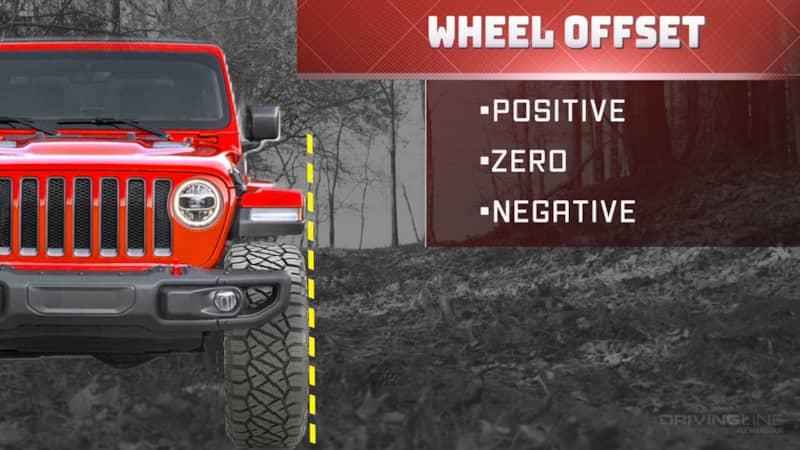
Backspacing 101
The more traditional and extremely important wheel number for the truck and SUV world is one that is measured in inches. It’s called backspacing and it is measure from the mounting surface of the back of the wheel to the edge of the wheel’s lip. The lower the backspacing number, the farther outside of the vehicle the tire will sit. From the factory, the Gladiator has around 6 inches of backspacing, which keeps the tire tucked well inside of the fender.
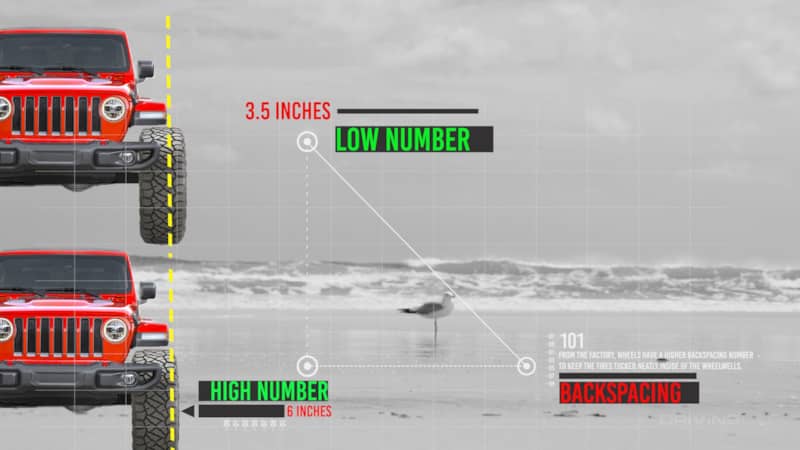
Grappler Contact
Within two weeks of purchasing my Gladiator, I upgraded the tires to a set of 35x12.50R17 Nitto Ridge Grapplers. I had these in a smaller size on my previous daily driver, a 2018 Chevy Colorado ZR2, and liked how well they performed on-road and off. The challenge with this tire was when I initially set them up at street pressure (around 35psi), the tires were crowning due to the narrow 7.5-inch-wide stock wheel. You can see this in the photo with the outer bands of the tread. In order to get the full contact patch on the ground, I had to drop the air pressure below 30psi, which took a hit to my fuel economy and performance. While I liked the look of the stock wheel just fine, I knew that I needed to get my Ridge Grapplers on a wider wheel.
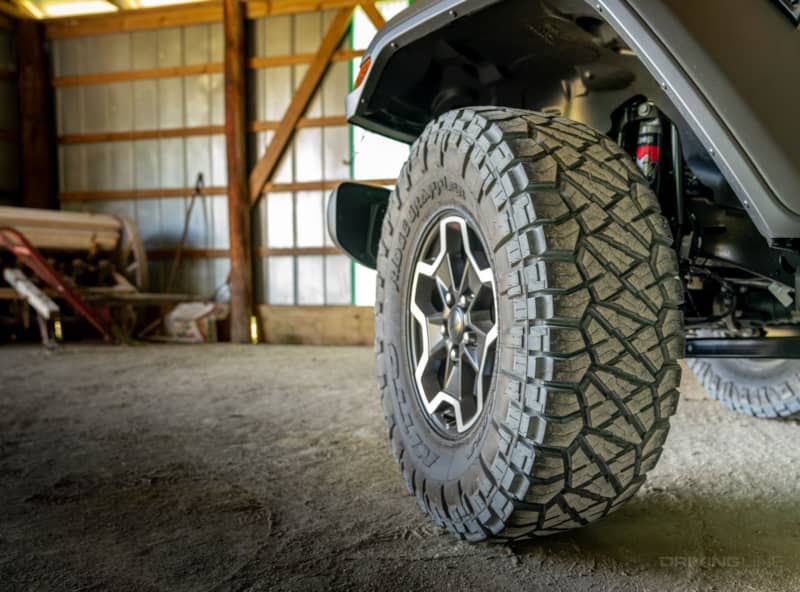
AEV Pintler
Looking at what the aftermarket has to offer in a 17-inch wheel, one company consistently kept popping back up on our radar- American Expedition Vehicles. AEV as they are more commonly known, offers an assortment of cast aluminum wheels that are Gladiator and Jeep Wrangler specific. We were immediately drawn to the company’s Pintler series wheel for its styling, but quickly learned its specs were perfect for our build. This wheel is offered in a Onyx finish, along with the painted matte black that we went with.
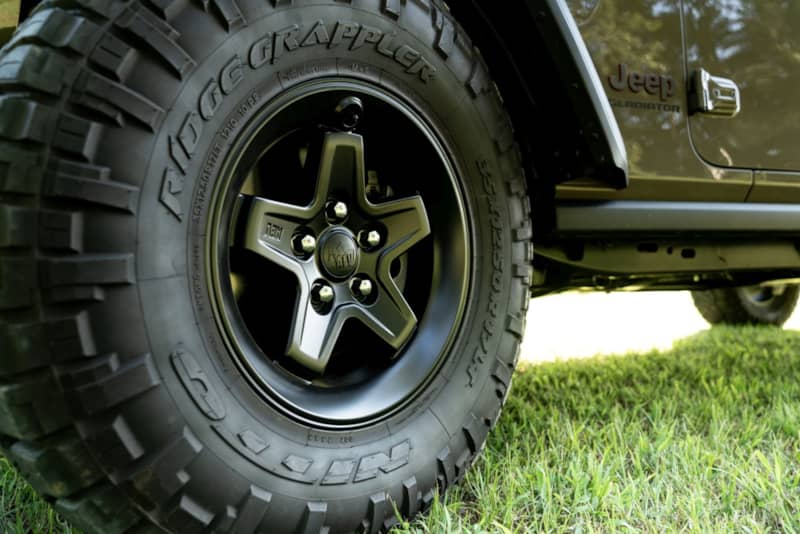
Mounted & Balanced
We had our 35’s mounted and balanced at Low Range 4x4 in Wilmington, North Carolina. Though AEV states that due to the design of their A356 T6 cast aluminum constructed wheel, placing higher ounce wheel weights on can be an issue due to clearance between the caliper and wheel, we did not have a problem. In our experience, Nitto’s take little weight to balance in general. Couple this with the fact that AEV wheels are built and tested to the incredibly strict SAE J2530 standards and it’s no surprise that it didn’t take hardly any weight to get our wheelset to zero out on the balancer.
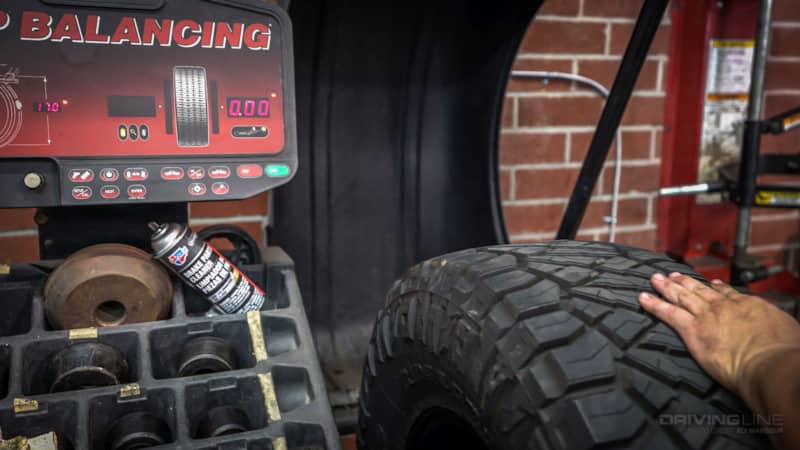
Standout Features
What makes a makes a wheel Gladiator specific? Well, for starters, AEV built the wheel in a way that it can accept the stock lug nuts. Sure, that might not seem like a big deal at first. However, when you consider the larger seat that the stock lugs provide, along with the quality of nut compared to an aftermarket set, and you understand that is a very smart design feature that few others offer. Another big feature is that these wheels have smart off-road design cues built in. One of our favorite’s being the recession for the valve stem that prevents it from being damaged off off-road.
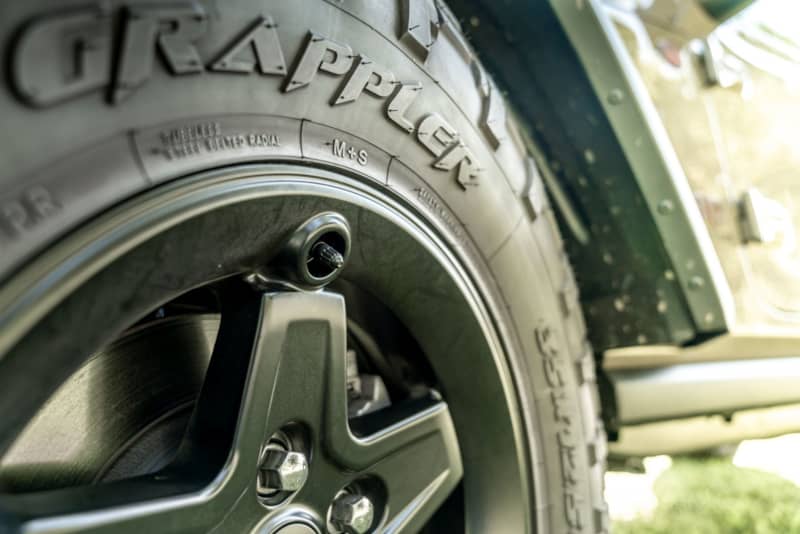
Even Tread
The Pintler wheel is a 17x8.5. That 8.5-inch width is what’s required by most tire manufacturers to run a 12.50-inch-wide tire. In fact, some tire and wheel shops will not mount a tire on a wheel that is too narrow by spec. The big advantage here is that you can run proper highway air pressure and retain a flat and even contact patch. This equates to better tire wear and doesn’t require you to sacrifice fuel economy or performance.
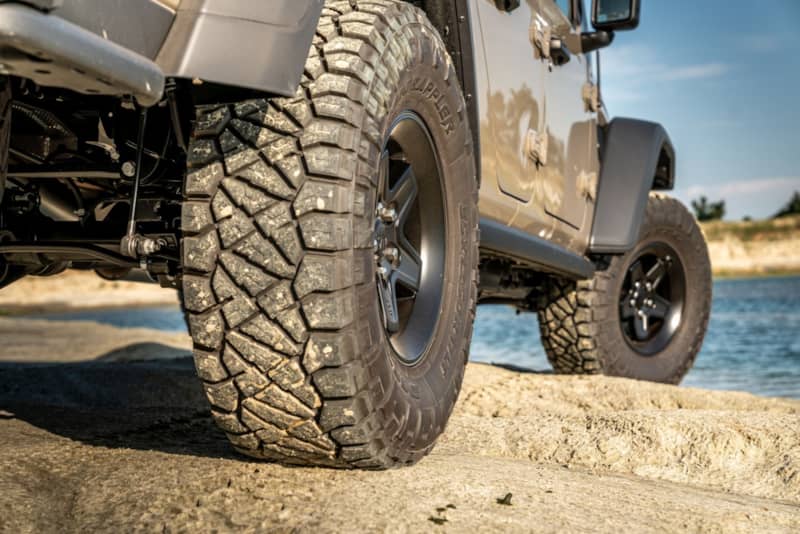
Keeping The Scrub Down
Getting a wheel with a high amount of backspacing was critical for a few reasons. Maybe the most important was the fact that a higher numerical backspacing figure would keep the additional leverage on the steering components to a minimum. AEV built the Pintler with 5.77 inches of backspacing, making it extremely close to factory specs. This means that we are keeping the scrub radius closer to stock and not putting extra stress on the OE ball joints, unit bearings, and steering system.
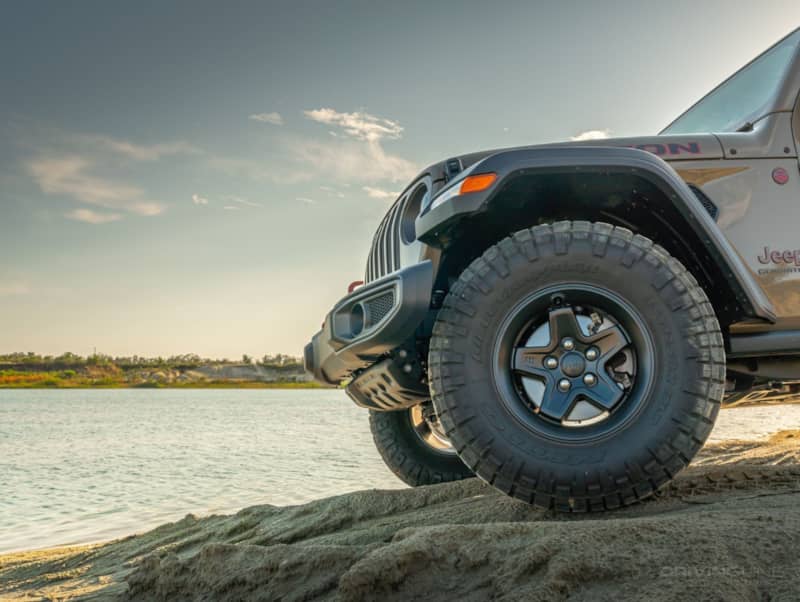
Undercover
We didn’t want to deal with the constant overspray of debris caused by wheel that pushes the tire too far outside of the flare. With an offset of plus 25mm, our AEV Pintler wheels keep the Ridge Grapplers nicely tucked under the fenders.
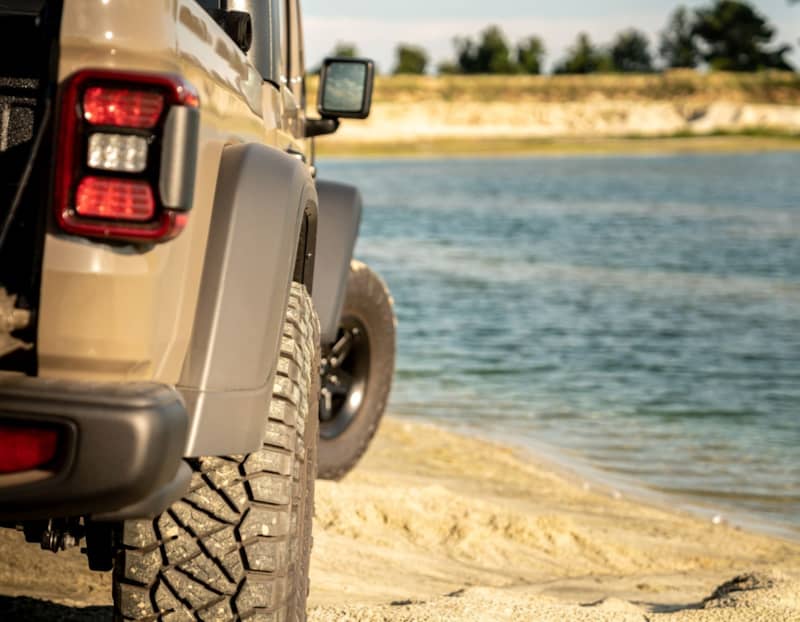
DIY RTI
Since we are still running the stock suspension, we were curious if the new wheelset would create any clearance issues. We knew that it would be close in spots as the inside of the stock front bumper doesn’t offer a lot of room. Since we didn’t have an RTI at the house but did have an S-10 on 40-inch-tall Mud Grapplers, we pulled the Gladiator on the front tire to check out the clearance all around. As you can see from the photo, the back tire of the Jeep is off of the ground. So, we would say we are a bit beyond where we would normally be on a standard RTI ramp.
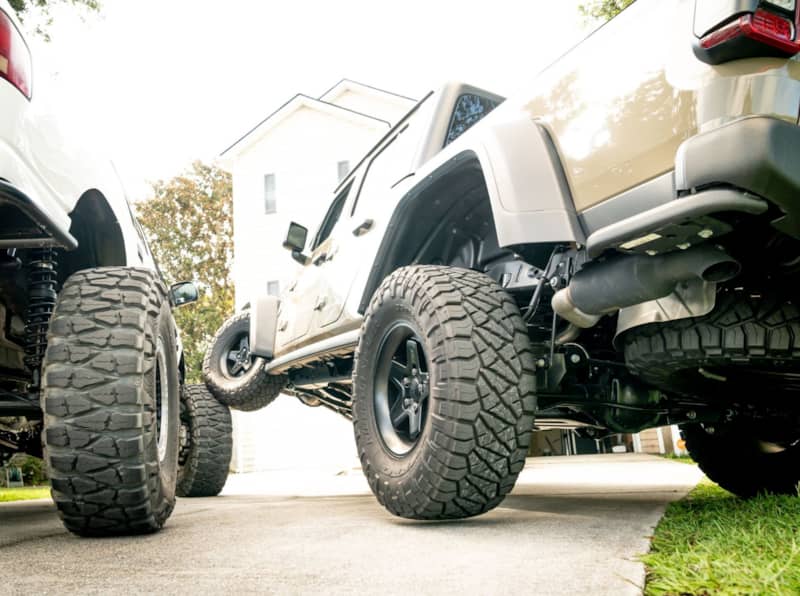
Rear Fender Clearance
The rear tire was fully tucked, and we had plenty of room. Thanks to the backspacing, the tire stays just inside of where the fender starts to swoop down.
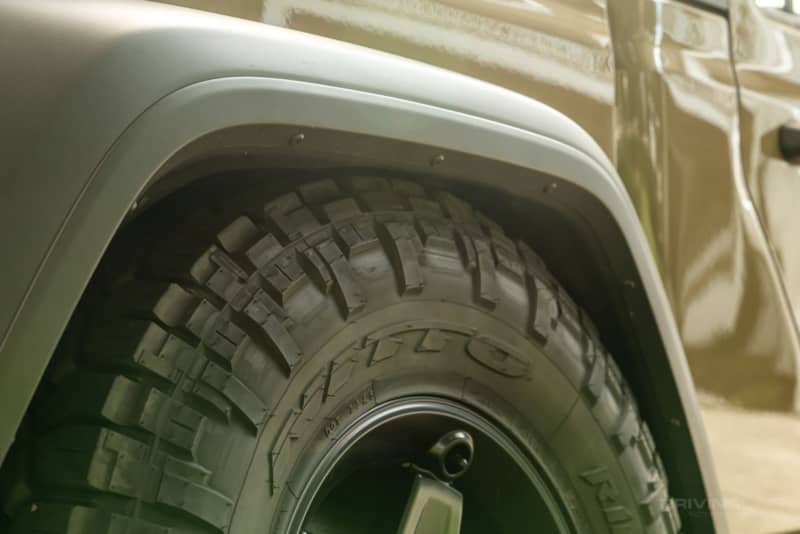
Front Fender Clearance
Upfront, it is much tighter. We do find that we occasionally rub on the inner fender line. Not enough where we feel that we need to modify anything, however. Overall, we are free from rubbing on the suspension and frame, which is critical. Another area that it is very tight is the inside of the front bumper. It hasn’t been an issue for the light wheeling we’ve done with the Jeep so far. However, we will keep an eye on it and update if it becomes a problem.
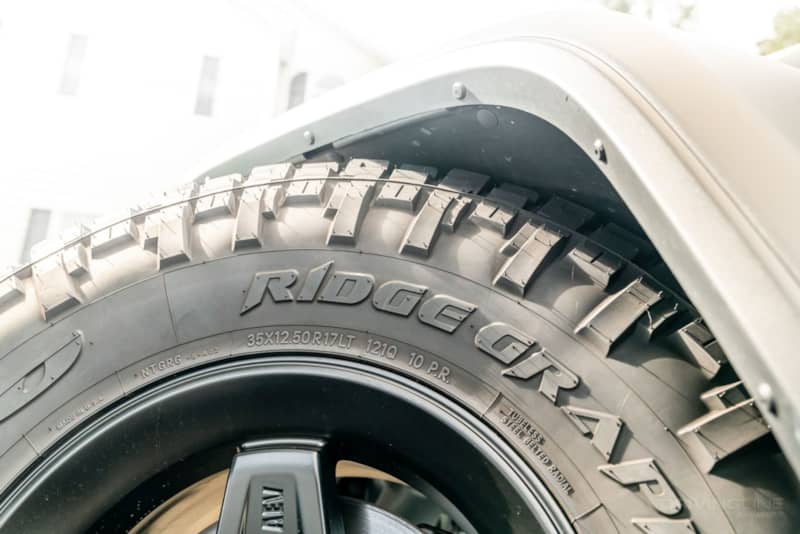
Things To Consider
One thing to consider when looking at wheels with the Gladiator platform is that the Rubicon, Mojave, and those equipped with Max Tow, will have wider axles. This helps keep the tire away from the frame and suspension components. We are most certainly tempted with the idea of running a 37x12.50 with a small lift one day. Given how the Pintler is configured, we could do so with no problem. At 35 pounds, the AEV wheels are a touch over ten pounds heavier than our stock Rubicon wheels. Our fuel economy generally roams between 15 to 17 and didn’t change in a measurable way with the AEV wheels. It’s also worth noting that our Gladiator has been calibrated for the tire size.
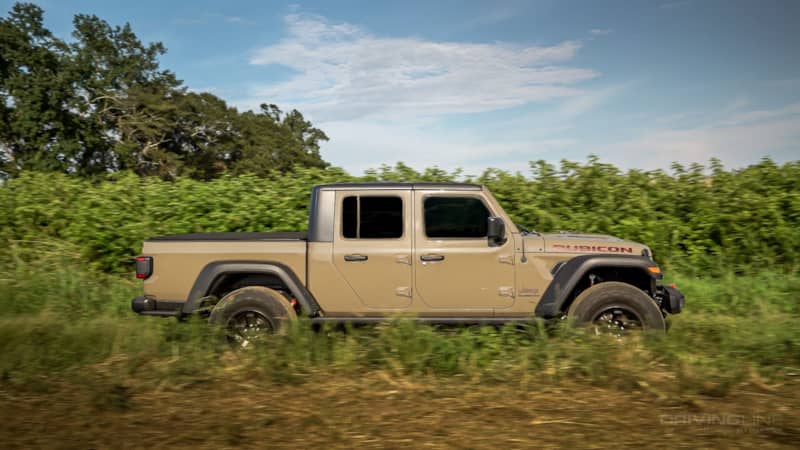
More Adventures Coming
We are enjoying our Gladiator and have even more adventures (and a few upgrades) in store. At this point, we feel it’s safe to say that 35s and no lift on the Rubicon platform is easily achievable given the tire right tire and wheel configuration. If you are looking at aftermarket wheels, it’s pretty clear that you’ll need to be mindful of how much backspacing/offset the wheel has. Too little backspacing (3.5 inches for example) could present a clearance issue when flexing the Jeep with no lift and 35s due to how much farther the tire is pushed away from the vehicle. While Jeep recommends a 2-inch lift for 35s, the company also routinely shows that same recommend 2 inches of lift with a 37-inch-tall tire on concept vehicles. Take that for what you will.
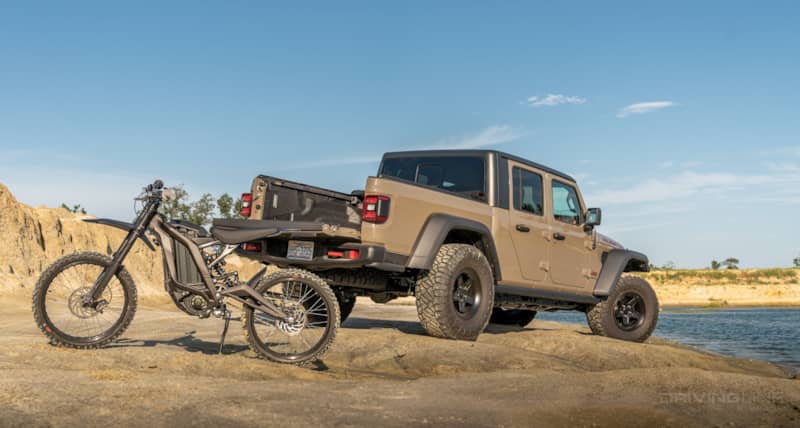
More From Driving Line
- The ultimate overland Jeep Gladiator is coming. Find out why it’s such a game changer.




